In today’s survival movies and TV shows, you often see how the protagonist is foraging wild edibles in the wilderness just so he or she may survive another day. They seem to endure their ordeal just fine with the bare minimum, and nobody seems to question their methods.
However, as an experienced forager, I tell people that such shows are just perpetuating a false premise and the reality of foraging to subsist is much more complex than what’s shown on TV. So let’s see if the average person could survive with just foraged food in the wilderness or if such attempts are destined to fail.
Survival TV shows have gained a lot of popularity in the last decade, and there are many such programs entertaining and “teaching” the masses. The problem with these TV shows is that they don’t display the reality of what surviving in the wilderness means, and even if some come pretty much close to that, there are still a lot of things that are missing.
In fact, most of these programs will just create a false sense of security in the minds of ordinary people since they often portray the skills of hunting, trapping, and foraging as something that everyone can do. If you would pick a few random viewers and throw them in the wilderness and ask them to forage for their daily nutrition, the chances are that all of them will fail to do so.
As a forager, I’ve learned since my early years that Mother Nature can provide you with enough resources to have a bountiful life and even survive during an emergency. However, not all food sources are practical, and not everyone can find these food sources. Even if you do manage to find wild edibles, you need to make sure your nutritional requirements are covered by what you managed to forage.
Even with gathering an apparently good quantity of food, you could still be subjected to slow starvation and, in a worst-case scenario, even poison yourself without even realizing it.
Within our ranks, people believe that preppers and survivalists have the adequate knowledge to survive in an austere environment by eating nothing more than wild edibles or some basic parts of such plants. They believe that you can get enough calories and nutrition from their living areas at any time and pretty much at any place. In fact, foraging has become more of a survival myth, and the reality of foraging could be too much to handle for the average Joe.
Is this, perhaps, one of those survival myths that could get you killed?
The Reality of Foraging During a Survival Scenario
I’ve often discussed the scenario in which an experienced survivalist could survive on just foraged food with other, more experienced foragers, and we came to the following conclusions.
Most people believe that they can survive with what nature can provide because that’s how our ancestors did it, and nowadays, with all the information available, we should have no problems following in their footsteps.
While our ancestors were indeed gatherers, we have to acknowledge that they didn’t rely on just plants to ensure the meals for their families and communities. Our ancestors were both gatherers and hunters, and that’s how they managed to survive. Foraging was probably a secondary skill employed to provide nutrition, and hunting was the primary means of providing enough calories to have a proper meal.
There’s also the assumption that Mother Nature provides enough of everything to make your survival easier. People believe that there’s enough to go around for everyone, and that’s far from the truth. While there are certain places where you could survive just by eating edibles for weeks and months, there are two main things to consider.
One, you will need to be in that place during the fruiting season; and two, you will need to be the sole forager because if there are other animals or humans searching for the same edibles, you won’t be able to keep up with the competition.
Also, theirs is no guarantee that you will be able to enjoy a bountiful season since you can’t know how the weather will affect the growth rate of plants and their productivity. Even in traditional agriculture, there are good growing seasons, and there are bad ones when crops are destroyed or the yield is much lower than expected.
The time of the year plays an important role in your survival, and to exemplify this, think of the winter months. During this time of the year, a forager’s life is brutal, and even the animals which have the survival skills embedded in their DNA will have a hard time surviving. When snow is covering all the environment around you, it’s almost impossible to find the plants you’ve seen on TV or the ones you’ve read about in foraging books. Frost and snow kill the plants or make them inaccessible, making foraging an impossible task for the average person.
Finding the Plants
This is a complex topic and a challenging experience in the field. Experienced foragers have years of experience in the field, and they are able to recognize plants during each season (if available) and at any stage of their development.
Let’s talk about the spring season when plants begin to emerge. Many believe that it’s the best time of the year to forage for wild edibles, and they won’t starve since everything is available. While it’s recommended to forage certain plants during the spring months, there are a few things people are unaware of.
First of all, there is a lot of biodiversity during the spring, and you need to be able to properly identify plants before picking them. Most people lack experience, and even if they bring a foraging guide, they will have a hard time identifying the plants. Also, foraging guides have only one or two photos/drawings of the plant, and most certainly, they won’t look like the ones you’re searching for.
This is because the editors pick the best photos (visual-wise) to exemplify the plants, and they do not show the various growing stages of the plant. Since you are starving, you can’t wait for the plant to bloom and grow so that it looks similar to the one in your foraging book.
Second, plants grow at different rates, and when it comes to nutrition, they often lack the calories needed for subsistence. Most growing plants are mainly water when they aren’t fully grown, and this means you need to gather a large quantity in order to obtain minimal nutrition value from them. Once again, you don’t have the luxury of waiting for the plants to grow, and you will be forced to eat what you can get your hands on.
This brings us to our next problem. Let’s say you do manage to find enough plants to obtain some sort of nutrition and calm your growling stomach. Do you think that’s the end of the story? No, your foraging experience is far from over, and you will need to find the same quantity of plants each day and eat more than one type of plant.
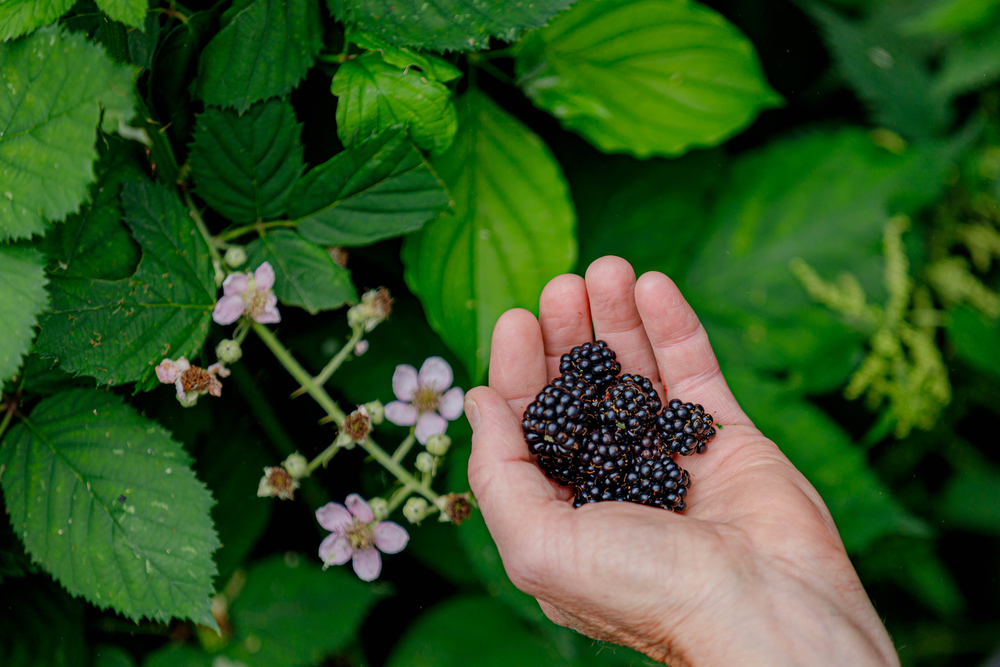
Chances are your stomach won’t agree with your new diet, and you may get sick. A sudden change in diet can upset your stomach, and you will have to deal with other issues afterward. Your body is used to consuming certain foods, and eliminating those foods from your diet suddenly can lead to stomach cramps, diarrhea, vomiting, and so on. You might have a chance of keeping everything down if you manage to diversify your diet.
Third, your lack of experience in identifying and using plants can have a disastrous outcome. Many plants look alike, and some of the edible ones have poisonous cousins, and people have difficulty telling them apart.
For example, you will be looking for Queen Anne’s Lace (Daucus carota) to harvest the edible flower heads, but you may end up picking Hemlock (Conium Maculatum), which is one of the most poisonous plants in North America. Belladonna (Atropa Belladonna) is also a poisonous plant that is often mistaken for blueberries, and those starving have often eaten the berries thinking they got lucky. These are just two examples, but there are many more plants out there that look edible or are almost identical to edible species.
Also, it’s worth mentioning that besides learning how to identify the plants, you also need to learn how to process, cook and consume them. Not all parts of the plant may be edible, and as a general precaution, you should do the universal edibility test for every plant you’ve foraged if you are not 100 percent sure you’ve got the right plant and if no other food source is available.
And lastly, think about the competition you will have to deal with when foraging. You will just move around looking for things to eat and hope to stumble upon something edible that you easily recognize. Animals, on the other side, know where to look, and they are able to even map certain regions to find the food they eat. Birds and animals will eat most of the edible plants, fruits, seeds, and nuts long before you are able to find them.
Also, even if you stumble upon an animal feasting on berries or other “delicacies” and you manage to scare away the animal, that doesn’t mean you’ve struck gold. Birds and animals can eat plants and plants parts that are poisonous to humans, so you better be sure you don’t scare away the animal for anything. Don’t assume that the stuff they were eating is safe for you as well since this can be a deadly mistake.
Can Someone Survive Only with Foraged Food?
This is a hard question to answer, and the reality on the field is much more different than what you read in books or see on TV shows. The majority of people stranded in the wilderness will have no chance of surviving with only what they can gather. If you do find yourself in a scenario in which you are forced to eat only what you can gather, here’s what I can recommend.
Make Sure You Pick Your Calories
What this means is that you don’t need to count your calories for a survival diet but rather search for and gather only (or mainly) high-calorie foods. To do so, you need to have a plan and learn in advance about high-calorie foods available in a certain area.
Focus your gathering efforts on edible tree nuts, safe-to-eat berries, and starchy roots. Collect as many as you can, even if you’ve had your fill, and put some aside for the coming days. Make sure you ration your supply of stashed edibles and do whatever you can to find proper places to store your resources. You should stash them somewhere out of the reach of animals, birds, and insects, and your stash should be easily accessible when needed.
One mistake some foragers make is gathering plants that can be used mainly for tea. Unless you’re planning to make a medicinal tea, don’t bother looking for such plants since they do not provide high calories, and they won’t prevent your stomach from growling. You can pick some of these plants to make and enjoy a warm cup of tea since it becomes a delicious morale-booster when you’re feeling down, but don’t spend your time and effort on them.
Also another phrase that most foragers are used to is the “use it as greens” or “it can be used in salads.” Sure, it might be great to enjoy a salad as your side dish, but apart from vitamins and minerals, the wild salad won’t provide a good calorie intake. Never use such plants as your main meals, and get something to go with that salad (fish, game meat, eggs, etc.).
There’s No Place for Picky Eaters in the Wilderness
My grandfather was the one who taught me about foraging from an early age, and he used to say that beggars can be chooser when it comes to foraging, and you need to make do with what you can.
If you look at the history of our ancestors, you will discover that the first pioneers and early settlers would often die from not eating enough. They were picky eaters, if you would believe that, and they would maintain a certain diet. Not eating enough for them meant eating mostly (or just) meat and no fat or carbs for long periods of time. It was a common form of malnutrition, especially among mountain men who had a hunting-based diet.
It took them quite some time to realize that they also need to eat plants/vegetables and basically the entire animal to cover their nutrition needs. They began to supplement their meat diets with wild edibles and add various plants, fruits, and nuts to their meals.
Chances are you will find edible plants, and you’re probably not used to the taste of these plants. Some of the edible plants you’ve read about, you probably have no idea how they taste. Even so, you will have to eat such plants if you want to survive, regardless of whether the taste is to your liking or not. The same goes for game meat, and you should eat ample amounts of organs and fat to make sure you cover your daily nutrition needs.
Use everything you have, and don’t give up
Any skill you have should be put to good use, and you shouldn’t give up. Maybe you didn’t manage to gather enough edibles, but even if you managed to find something, it’s still better than nothing. How about eating some insects to supplement your meal? These crawling creatures may seem unappealing, but they are surprisingly nutritious, and some are safe to eat. This may be an effective tactic to survive if your foraging plans don’t go as expected.
Make some fish traps, gather eggs from birds, and do pretty much everything you can to find food. Your mind is the greatest survival tool, and you should take advantage of it in a survival scenario. They say that fear is the mind-killer, and that’s a fact during a stressful situation. Keep your calm, plan your actions and spend your energy only on the things that matter.
Have a backup plan
If you’re not able to forage or if you have a hard time identifying wild edibles, you should have a backup plan to help save yourself. Perhaps you can fish to obtain food, or perhaps you’re good at navigating to find your way back, or perhaps you’re good at creating rescue signals to get saved.
While foraging can be a good survival skill, you shouldn’t ignore your others skills that can keep you alive and always have an action plan prepared for when the unexpected happens. Foraging might not keep you alive, but your other survival skills will work just fine.
Concluding
The wilderness can be an unforgiving environment, and it won’t be filled with wild edibles as some people believe. There aren’t high-calorie edibles available at every step of your journey, and believing you can survive just by eating plant food, is nothing more than wishful thinking.
It’s always better to go prepared in an unknown environment and make sure all your basic survival needs are covered. If you do have to rely on wild edibles to survive, make sure you pick the right plants, diversify your diet and choose your calories, but also use everything available to stay alive.


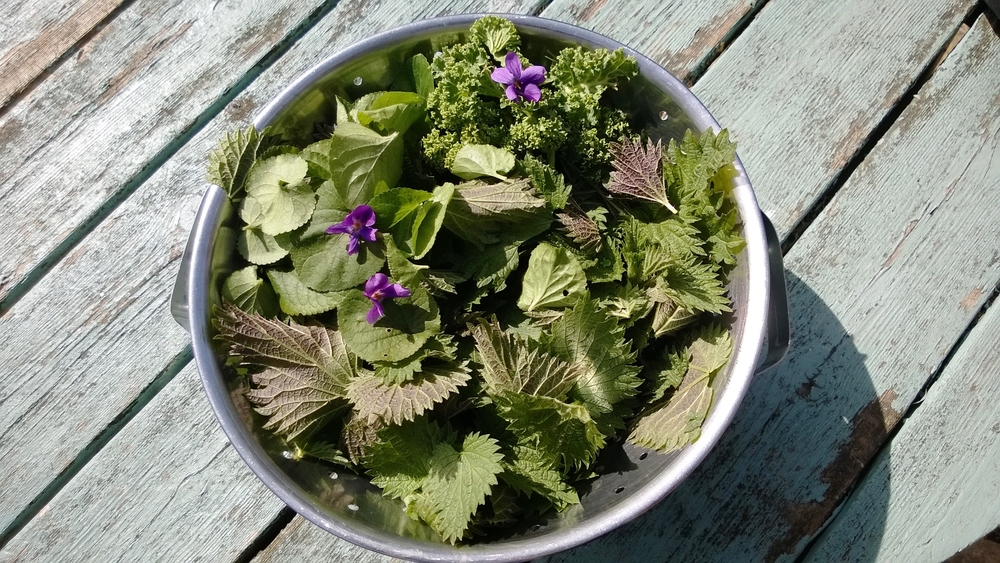


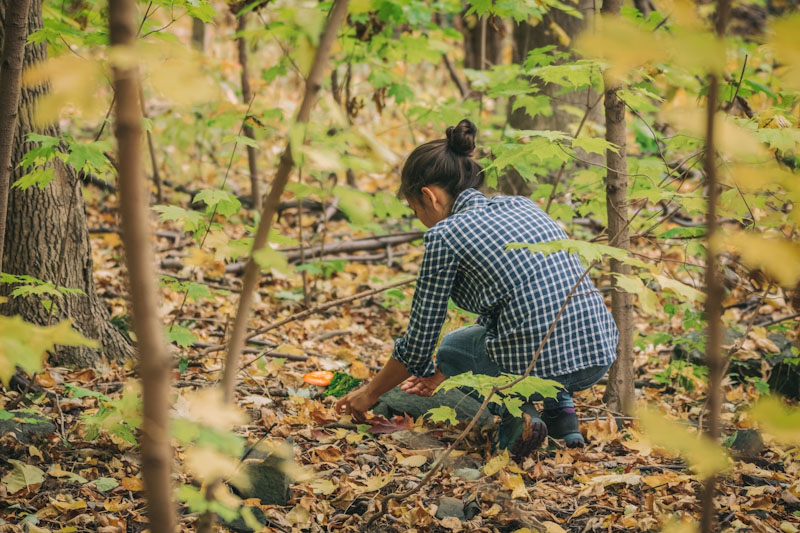
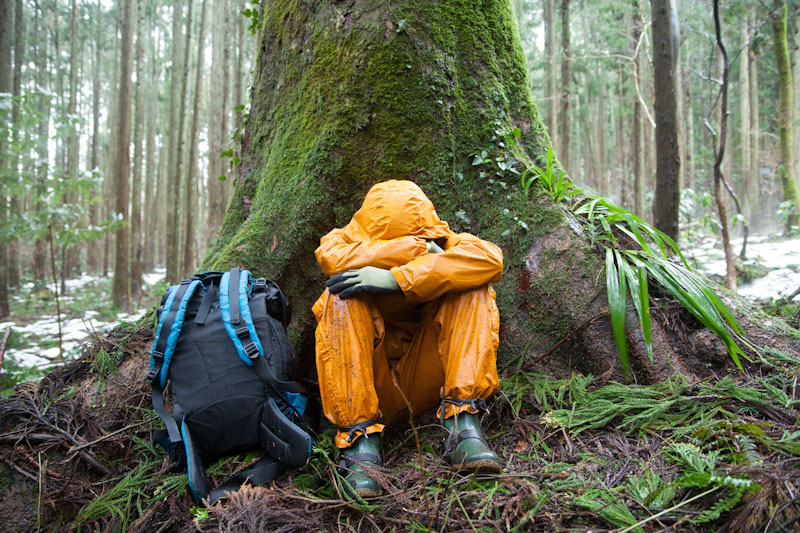
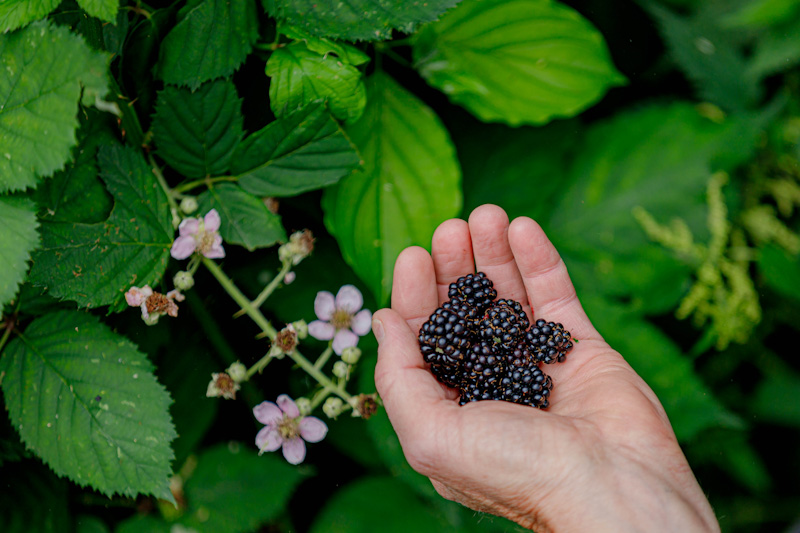
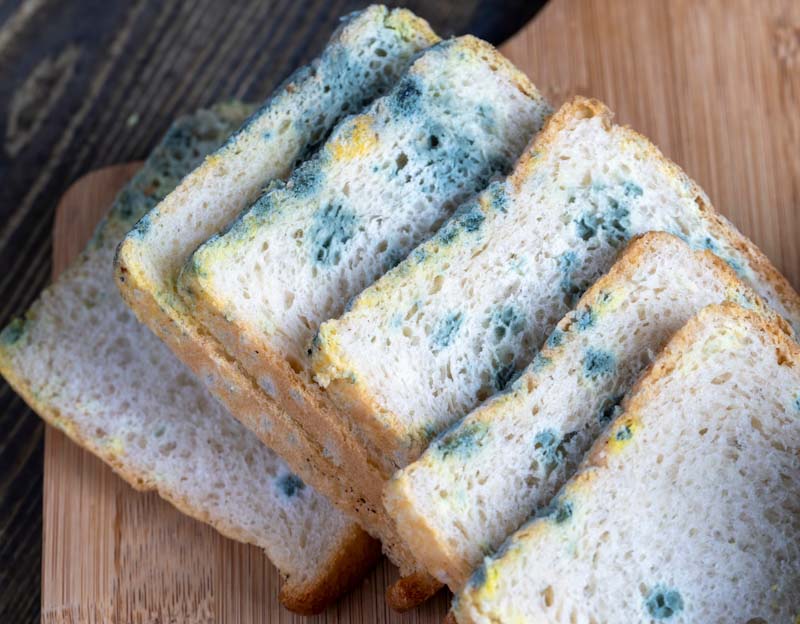


Radar | May 18, 2022
|
Bob, my opinion is that plenty of Indians created what are called “food forests” (tiny ones) along the route-trails they traveled when hunting long distances away. They did what “Adam’s job was to do from the Garden outward to The Beyond..” All of that is equivalent to the old Johnny Appleseed stories, when presumably he would travel old Indian trails from the Appalachians to the Mississippi River. A lot of those Indian Trails are now highways and Interstates. So my point is only that if one knew a preferred route for hiking, one could examine bringing along non-invasive edible “weed seeds” to plant along the trail (seeds good for small game and people). What I am describing might seem odd, but I have canoed miles and miles along a river route. Camping is OK, but sitting around a campsite would be boring to me; when a river is nearby and camping off trail.
john silvers | October 11, 2022
|
Interesting article, thank you for the sober advice.
We’re beginning to eat more native wild foods (weeds) in our area to convert to a more natural lifestyle in general. Wild foods include fish from cast netting, gill nets, and traditional fishing with a pole, as well as gathering crustaceans and shellfish. We live in a small coastal Florida town, but the population of the county is over 500,000. With that kind of population, it seems to me that thriving in a new environment is like the story of being chased by a bear. If we can outlast the majority of the clueless hordes of eaters, we’re on a better tact after the slaughter by natural selection. I haven’t researched bugs and insects as a food source.
It’s my understanding that dysentery and other fly borne illnesses will wipe out the majority of the population within months.
If possible, could someone do articles on dysentery and other related diseases that will decimate large populations when systems break down and an article on foraging food sources other than plants such as bugs and methods of trapping small game?
Again, your expertise is appreciated and welcomed.
Robert | November 29, 2022
|
I couldn’t agree more with your article. Even IF someone truly had the skills, there will be hundreds and thousands of others heading into the mountains as their bugout destination. Every fish, deer, and berry will be long gone inside of a month because of all the people “surviving off the land.” These outdoor “survivalists” will end up killing each other over resource competition.
I think a similar mentality exists for those with a “survival garden.” Typical garden vegetables such as tomatoes, cucumbers, beets, peppers, lettuce only have 10 to 50 calories each. I don’t suspect most people want to eat 50 of those items a day on 2,000 calories a day diet. Or 16 ears of corn a day. How many plant high calorie foods such as pinto beans? It takes about 2 to 3 plants to make a pound of pinto beans at 1,500 calories a pound. A garden is essential for proper nutrition, just don’t underestimate how much is needed.